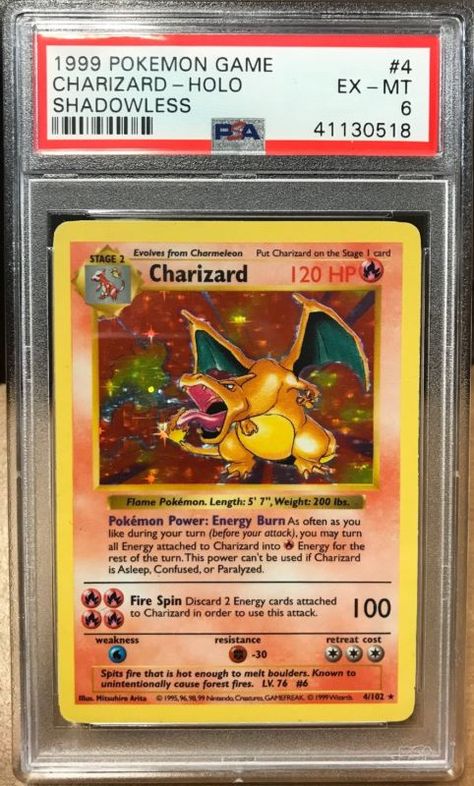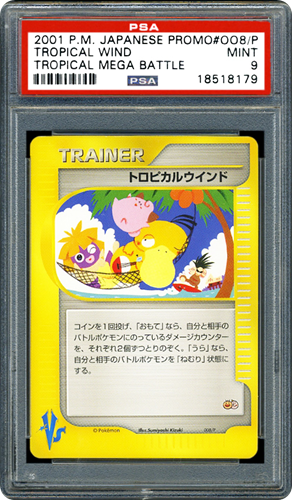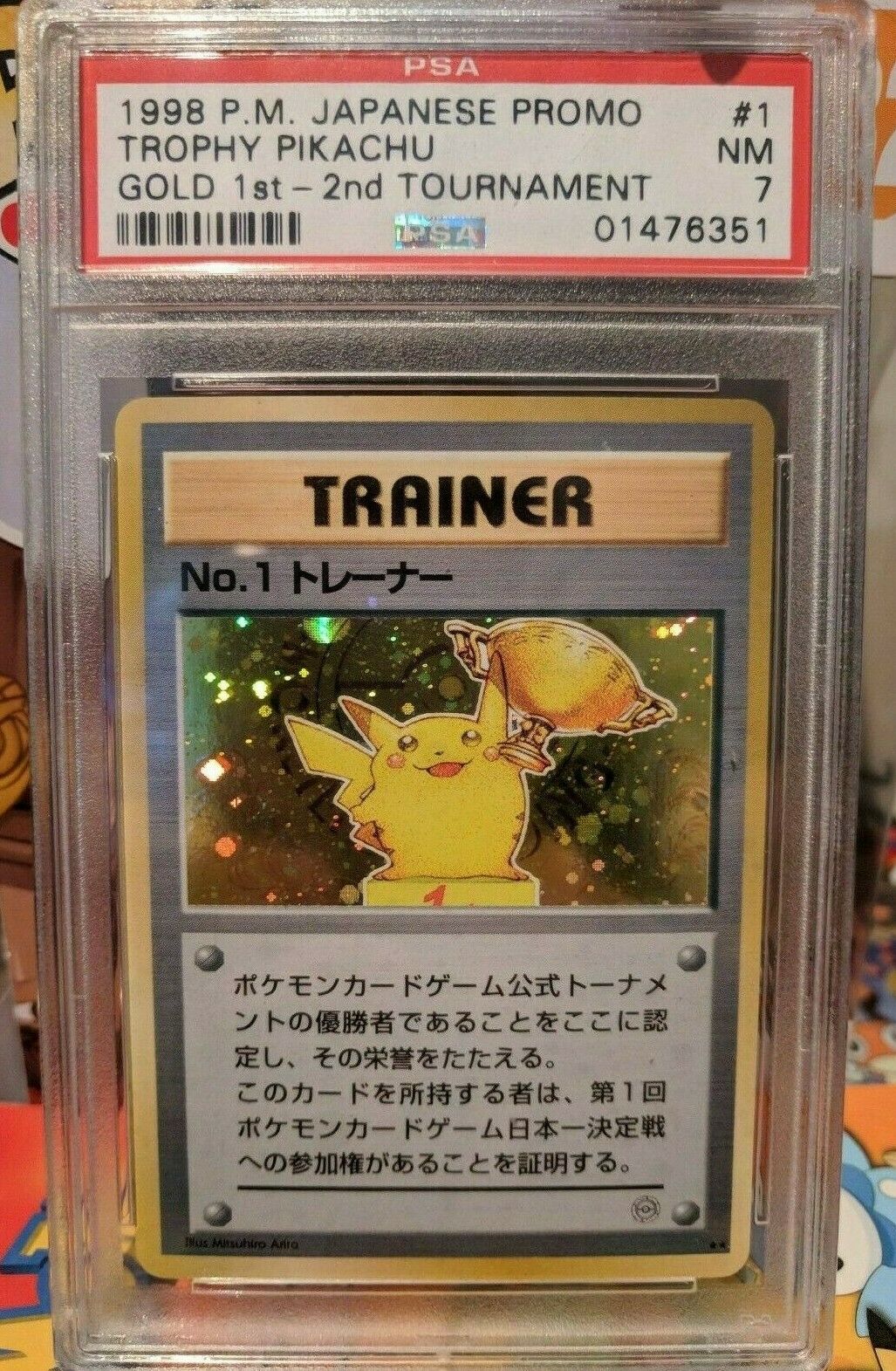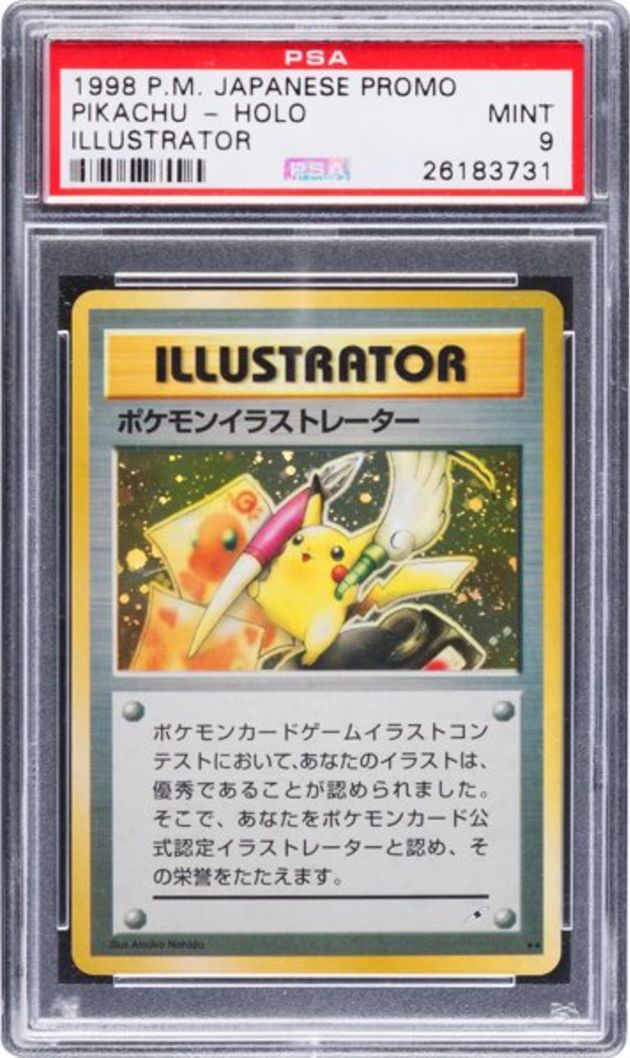Top Five Rarest Pokemon Cards of All Time

Top Five Rarest Pokémon Cards of All Time
Let’s face it. Every single one of us has read a list like this. The content doesn’t change much, and the answers are often just repeated from similar ones. What are the top ten rarest Pokémon cards of all time? You probably know the answer already. But what don’t you know? What about when you read one of these lists? Do you actually learn anything in the little snippets of information that you see listed next to each rare Pokémon card? Chances are, it is little more than the price a sentence of information about its availability.
We’re here to change that. What are the top ten rarest Pokémon cards, you ask? It no longer matters. Now, it is the top five rarest Pokémon cards, and the facts you never knew.
5. 1st Edition Base Set Charizard

It’s generic of us to start with this card. Everybody knows it. Literally. Everybody. But why?
Okay, so there are a few different answers as to why, and why this card in particular is coveted more than other cards from the era.
Firstly, it depends on the type of Charizard card. Just having a regular Charizard card from Base Set is cool, since it was one of the rarest cards of the set, but it still could be worth relatively little. This is because there are two main factors that influence the cards rarity:
The PSA grading is undoubtedly the first and foremost factor in how valuable the card is. Clearly, a damaged card is soiled in the eyes of most people, unless it holds some sort of memory to it, in which case it’s more personally valuable than anything else.
Secondly, is whether or not it is ‘shadowless’. The term ‘shadowless’ is a really hot topic among collectors right now, but what it actually means is slightly more complicated than people think. Charizard itself is not literally shadowless in the picture, but the card it’s printed on has some features that define it as being shadowless. For example, on a the right hand side of the card’s border, there isn’t the usual black shadow, which is a literal example of the shadowless feature. But, the other features are a little less straightforward. The ‘HP’ symbol is printed in a thinner colour as well, and the copyright date will have an extra ‘99’ next to it. Also, all shadowless cards are 1st editions, and they packaging that they come in is also considered ‘shadowless’, which you can determine through some slight differences, such as Charizard’s wings on the booster box. It can become quite complicated, so we recommend doing your research about shadowless Pokémon and how to find them before attempting to decipher whether you might own one of these very special cards.
4. Tropical Mega Battle Cards

Price Tag: Approximately £8200 (great variation in price depending on card)
Prior to the Pokémon World Championships that we all know and love, Pokémon was a little more experimental in their approach to gathering the world’s best TCG players and letting them duke it out. The Tropical Mega Battle was said experimental approach, and sounds like something directly taken from a television show, if we’re honest!
Occurring between 1999-2001 before being replaced by the Pokémon World Championships, the Tropical Mega Battle was held in the Hilton Hawaiian Village of Honolulu, Hawaii. Entry to the tournament was similar to the World Championships, in the sense that players had to receive an invitation to the event, which was based on the criteria that they were the best player of their respective countries.
Those who attended the event earned themselves the coveted cards that we’re talking about, and since there was an entire set of them for each year (including extras!), seeing a complete collection of them now would definitely be a sight to behold.
As for a little more information on the event itself and the stories that these cards hold, we can tell you that it was split into two days that went something like this:
Day 1
-
Gym Leader Challenge
Day 2
-
Opening activities (group photo, speeches, and general meeting and greeting of players)
-
Qualifying Matches
-
World Communication Match
-
Harbour cruise
All of that sounds amazing to do, if you ask us! Imagine going on a tropical harbour cruise just for playing Pokémon!
3. PLAY Promotional Cards
Price Tag: unknown... and a lot of effort
Umbreon.jpg)
From January 2003-2006, Pokémon created the Pokémon Players Club in Japan, which served as a replacement to the Pokemon Fan Club, and held weekly TCG sessions. These weekly TCG sessions, were the The Pokémon Players Club’s way (among other methods) for members to earn experience points, which worked as a currency towards earning exclusive PLAY Promotional Cards. Now, while this sounds easy enough, the sheer amount of effort required to gather these experience cards is much higher than you probably expect. Firstly, there were thirty-two of them in total, each of which were earned in an increasingly difficult way.
So, while it may have been easy to obtain the Regice ex card for subscribing to the first season of the club, getting the Umbreon Star card, which required 70,000 experience points, would have been nothing to joke about. For reference, the experience point award structure was not forgiving at all. The most experience points you could gather at a single time was 1000, and that was for an entire year’s subscription to the club. Otherwise, for winning a battle, you’d only gather 10 experience points, supplemented by an extra 500 experience points for placing first in a tournament. Long story short, you couldn’t just have luck or dedication to collecting to get these cards. You needed skill and patience, which is one of the reasons that they’re so hard to find, as you can imagine that those who have them don’t want to let them go.
2. 1st Place Trainer Card

Price Tag: £58,000 (1998 No. 1 Trainer 1st Place card currently on eBay)
There are many variations of this card with slightly different names and artwork, but at their core, they are the same thing - the award for placing first in a Pokémon tournament. First. No less. Yes, there are second and third place Trainer cards, but first is the clearly the rarest.
They’re very self explanatory, with their rarity being attributed to the fact that very few people actually place first in a Pokémon tournament. But, what adds to their rarity is their age and the fact that those who have them are very unlikely to want to let them go. In short, collecting these cards is near impossible... but seeing them is a feat in itself.
1. Pikachu Illustrator

Price Tag: £75,000
It’s well known by now that the Pikachu Illustrator card is among the rarest on the market, and there’s a good reason for this. Firstly, it’s over twenty-one years old now, with it being released in January, 1998. Secondly, the method to obtain it was - and still is - very unique for a Pokémon card. Rather than blind luck, or winning a TCG contest, artists were encouraged to submit their artwork as part of the CoroCoro Comic Illustration Contest in January of 1998. But what was the CoroCoro Comic Illustration contest?
Well, there’s actually a lot to know about it. CoroCoro Comic, in itself, is a monthly Japanese manga magazine that continues to play an integral part in Pokémon’s history. The magazine is targeted at elementary school children, and young boys in particular, which is noticeably younger than a typical Shōnen manga. It features various comic strips from well known franchises, and its popularity greatly aided Pokémon in the early days of the company. Some Japanese Pokémon games for the Game Boy, for example, were originally only first available through the magazine at first.
This provided Pokémon with an immediate pool of readers to draw upon, and it turn, gave CoroCoro Comic a boost in sales. However, aside from providing various examples of cultural touchstones, with Pokémon being one of the most notable, CoroCoro’s longevity and popularity has allowed it to hold some longstanding competitions, and the CoroCoro Comic Illustration Contest is a prime example of its regular illustration contests for Pokémon. These contests were clearly aimed at the target demographic for the CoroCoro Comic magazine, which means that the winners were elementary school children. This is important, as those of us who remember the fond (or not so fond) times of elementary school will recall the complete ignorance that most children have for preserving their rare cards.
Even if you did take care of your cards at that age, if you were seven years old, you probably wouldn’t be thinking of PSA grading your rare card, or keeping it in a top loader, or even sleeving it. That is an additional reason as to why the Pikachu Illustrator card is so rare, as only twenty of the original thirty-nine that were handed out as prizes are even known to still exist, with yet an even smaller amount - ten of them to be precise - being in mint condition. But, while the Pikachu Illustrator card has become coveted and famed, let’s not forget all its companion cards from similar CoroCoro Comic illustration competitions, or similar competitions, which feature the winner’s own artwork on the card, and that’s really cool if you ask us!
Final Words
With all the list articles out there these days, we tried to do something different for you, and let you learn something new! The rarest Pokémon cards seem to be common knowledge at this point, but sneaking in a few hidden details about them, has hopefully switched up the game a little!






